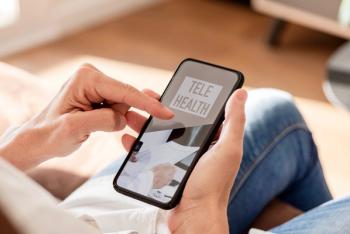With over one-third of the world’s population under restricted movement to prevent the spread of COVID-19, few were prepared for how drastically it would change daily life. This includes many in the healthcare industry, with professionals ranging from doctors, nurse practitioners, clinical psychologists, to licensed clinical social workers asked to close their doors to non-emergency patients.
Going weeks or months without treatment is not an option for many patients, especially those in recovery, and many physicians cannot sustain their practices on reduced revenues for that long. Both patients and physicians require business to return to as close to normal as possible or to find a safe and suitable alternative in the interim.
Telemedicine-diagnosing and treating patients remotely via phone and/or video call-seems like the most practical solution; but, among other things, it requires certain technological and regulatory infrastructure. With this infrastructure, patients can continue getting the necessary care and practices can partially recover lost revenues, which may protect even more healthcare jobs when the U.S. needs them most.
Trending: Five Medicare Services to Keep Your Patients and Practice Healthy During COVID-19
Telemedicine’s history and benefits
Historically, because of technological, financial, and regulatory barriers, telemedicine in the U.S. has been reserved for select patient groups, including patients in designated rural areas with low densities of specialized healthcare practitioners and U.S. Department of Veterans Affairs (VA) patients. One organization-the American Telemedicine Association, founded in 1993-has focused solely on telemedicine. With existing broadband infrastructure, patients can now receive telehealth services from home. By preserving social distancing during COVID-19 outbreaks, many patients may actually be safer and more comfortable than they would at doctors’ offices. Telehealth also almost completely eliminates weather-related cancellations, preserving patient treatment, protecting provider revenue streams and improving physicians’ time utilization.
In the past decade, as mentioned by Hosseiniravandi et al., “with the ever-increasing growth of information and communication technologies, telerehabilitation, especially home-based rehabilitation (HBR), has been widely considered by researchers, in musculoskeletal, neurological, respiratory, cardiovascular, and other health-related problems”.
While telemedicine is not a new concept in research, it is new to many field-based providers and even entire fields of care. Take physical therapy, for example, where telemedicine was mostly practiced by the VA prior to COVID-19. Since the pandemic began, some of America’s largest insurers, including Aetna and UnitedHealthcare, announced in April that they will temporarily reimburse for physical therapy telehealth services. It is a great opportunity to integrate telemedicine as a core component of medicine, not only as a research or stand-alone-project.
Continue reading on page 2...
Financial and regulatory changes
Recognizing the need to rapidly expand telehealth services, the Centers for Medicare & Medicaid Services (CMS)recently implemented policy changes to do so, for the duration of the COVID-19 Public Health Emergency. Medicare could previously only pay for telehealth for patients in designated rural areas, but those guidelines have been relaxed and Medicare can now cover telehealth services for more patients. In a relief to physicians, these services include routine “evaluation and management visits.”
According to the U.S. Department of Health & Human Services, covered providers who want to use video or audio communication technology to provide telehealth services can use any non-public facing remote communication product to communicate with patients. Essentially, privacy comes first and foremost, and physicians should look into communication services providing closed, two-way, non-public, and password-protected channels.
Read More: Federal Aid: Is Hazard Pay Next?
Technology
In addition to the proper patient communication technology, providers must have the proper information technology. This means providers must ensure their own remote access to all of the information they need to provide the best possible care.
Along with devices that collect and analyze data, a new generation of plug-and-play sensors has also come to life for patients, such as with heart failure according to Volterrani, which with standardization can lower management costs and make implementation more feasible. Providers who treat and examine patients by using medical devices that automatically record and upload patient results to secure cloud storage are ahead of the curve. Those who do not already use IoT-integrated devices and storage may find it more difficult to monitor and treat patients remotely and in turn, increase their own need to leave their homes, and risk exposure to and the spread of COVID-19.
There are many challenges to solve in the current healthcare landscape, including the need for adequate training, clarity on data ownership and handling, the ability to scale up to provide to larger patient populations with routine or therapeutic care. Healthcare practices must have dashboards measuring their impact, quality of care and patient outcomes, and they need to maintain revenue and continue employing their staff, not to mention slow the spread of COVID-19. Telemedicine may partially solve all of those issues, but only if integrated with the right infrastructure and with buy-in from all key stakeholders.
Eric Dusseux, MD, MSc, MBA is CEO of BIONIK Laboratories, a robotics company focused on providing rehabilitation and mobility solutions to individuals with neurological and mobility challenges.









